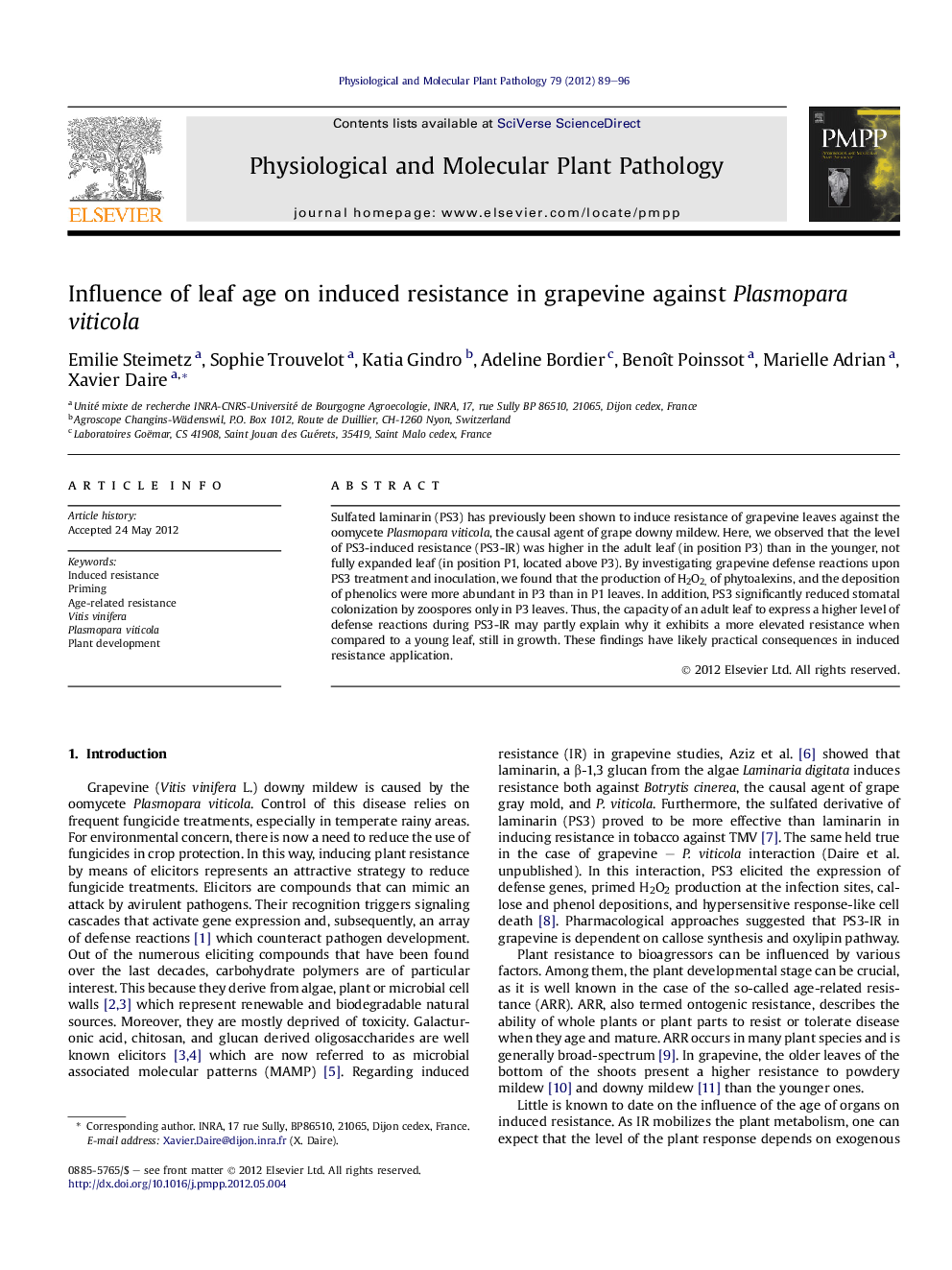| Article ID | Journal | Published Year | Pages | File Type |
|---|---|---|---|---|
| 2836451 | Physiological and Molecular Plant Pathology | 2012 | 8 Pages |
Sulfated laminarin (PS3) has previously been shown to induce resistance of grapevine leaves against the oomycete Plasmopara viticola, the causal agent of grape downy mildew. Here, we observed that the level of PS3-induced resistance (PS3-IR) was higher in the adult leaf (in position P3) than in the younger, not fully expanded leaf (in position P1, located above P3). By investigating grapevine defense reactions upon PS3 treatment and inoculation, we found that the production of H2O2, of phytoalexins, and the deposition of phenolics were more abundant in P3 than in P1 leaves. In addition, PS3 significantly reduced stomatal colonization by zoospores only in P3 leaves. Thus, the capacity of an adult leaf to express a higher level of defense reactions during PS3-IR may partly explain why it exhibits a more elevated resistance when compared to a young leaf, still in growth. These findings have likely practical consequences in induced resistance application.
► Sulfated laminarin PS3 induces resistance against Plasmopara viticola in grapevine. ► Induced resistance (IR) level is higher in the adult leaves than in the young leaves, still in growth. ► PS3 treatment activates defense reactions (H202, phytoalexin, cytological changes…). ► Higher IR in the adults leaves correlates with enhanced expression of defense reactions.
